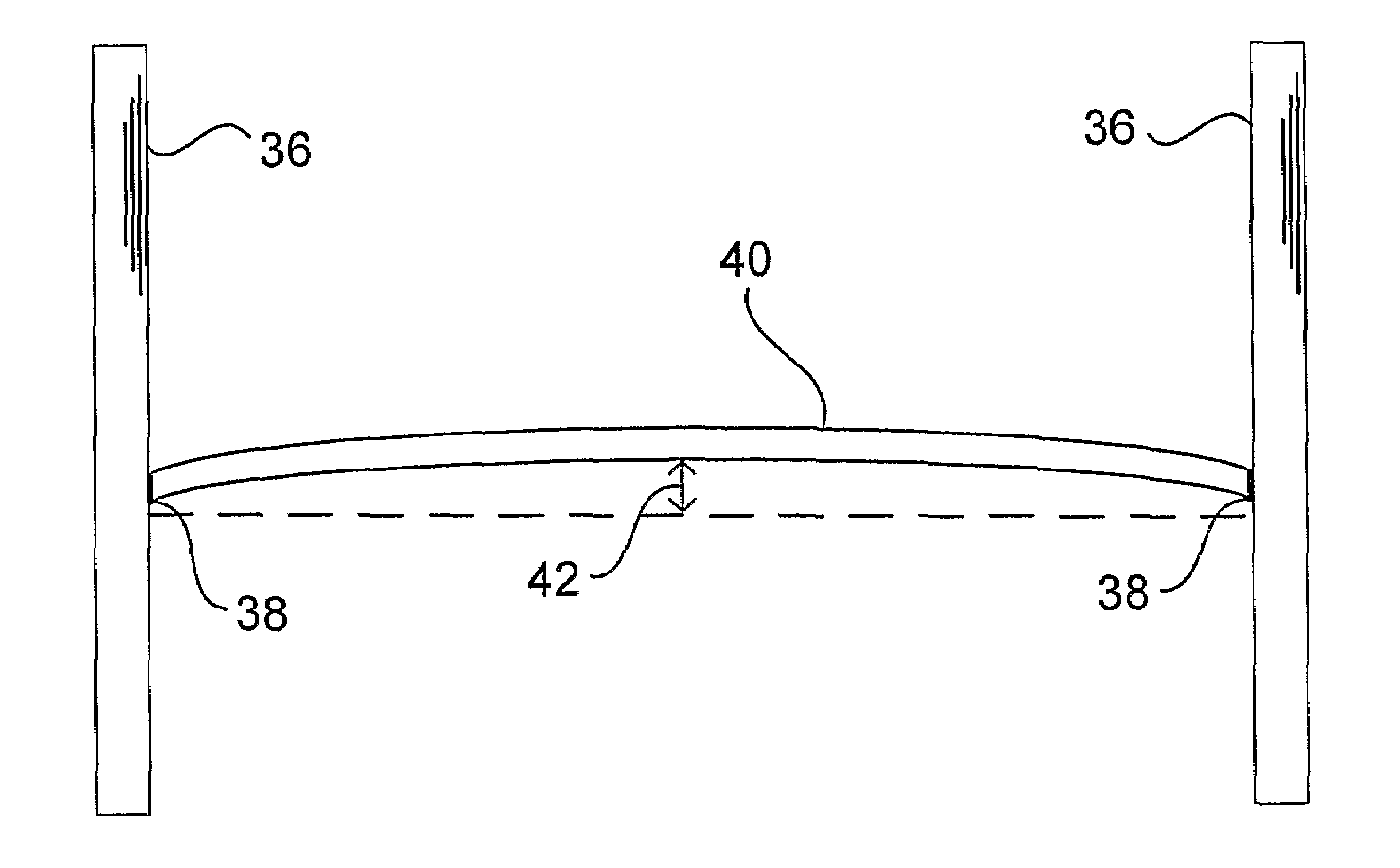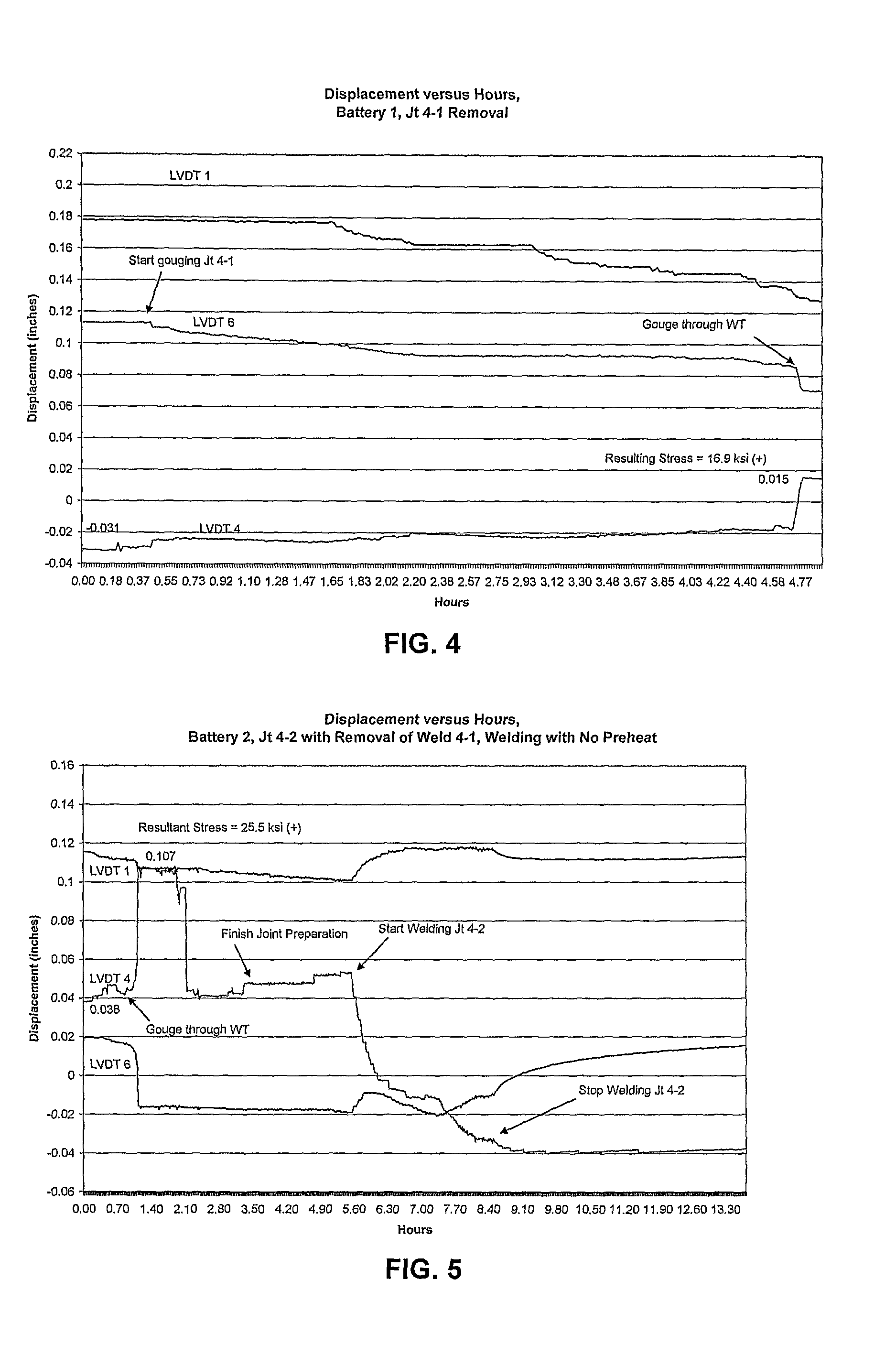Methods and systems for mitigating residual tensile stresses
a technology of residual tensile stress and metal assemblies, which is applied in the direction of manufacturing tools, soldering devices, auxillary welding devices, etc., can solve the problems of shrinkage of the cooled portion to a predetermined length, and achieve the effects of mitigating residual tensile stress, and reducing residual tensile stress
- Summary
- Abstract
- Description
- Claims
- Application Information
AI Technical Summary
Benefits of technology
Problems solved by technology
Method used
Image
Examples
examples
[0065]FIGS. 4-10 represent the data collected from linear variable displacement transducers during testing of the invention. FIGS. 11-14 represent temperature data collected at discrete locations along the weldment during application of the methods of the present invention. A rigid structural frame was welded in a series of test batteries to characterize residual welding stress. In each of the test batteries, a beam was welded between two rigid columns. Although the columns were rigid, some flexing was observed as shown in more detail below. Measurements were taken while one of the joints was cut out and again when the beam was cut away from the columns. Due to difficulties in gathering data in a welding environment, not all of these activities were recorded.
[0066]A cut made into a member under tension will expand and snap open when the member is finally severed. These responses are illustrated in Batteries 1 and 2, FIGS. 4-6, which tests do not incorporate the invention and are con...
PUM
| Property | Measurement | Unit |
|---|---|---|
| temperature | aaaaa | aaaaa |
| temperatures | aaaaa | aaaaa |
| temperatures | aaaaa | aaaaa |
Abstract
Description
Claims
Application Information
 Login to View More
Login to View More - R&D
- Intellectual Property
- Life Sciences
- Materials
- Tech Scout
- Unparalleled Data Quality
- Higher Quality Content
- 60% Fewer Hallucinations
Browse by: Latest US Patents, China's latest patents, Technical Efficacy Thesaurus, Application Domain, Technology Topic, Popular Technical Reports.
© 2025 PatSnap. All rights reserved.Legal|Privacy policy|Modern Slavery Act Transparency Statement|Sitemap|About US| Contact US: help@patsnap.com



